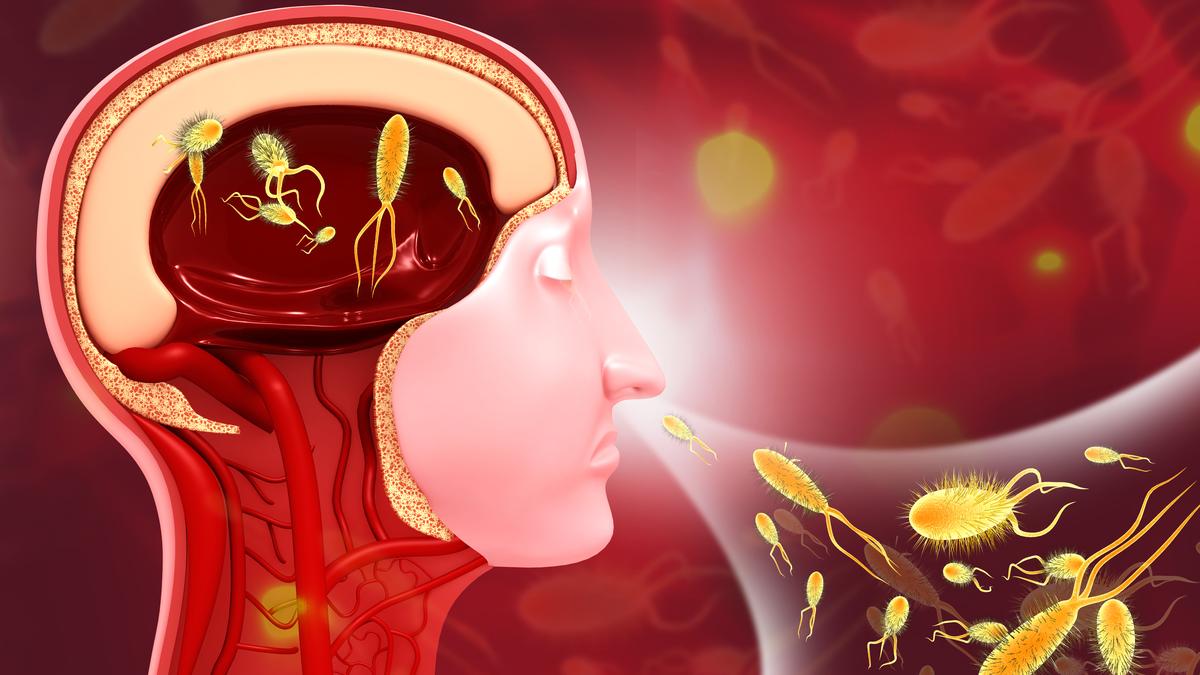Now Reading: Understanding Amoebic Meningoencephalitis: 10 Key Facts
-
01
Understanding Amoebic Meningoencephalitis: 10 Key Facts
Understanding Amoebic Meningoencephalitis: 10 Key Facts

Fast Summary
- Amoebic encephalitis is a rare, fatal infection of the central nervous system caused by free-living amoebae found in freshwater environments.
- Kerala has reported 70 cases and 19 deaths due to amoebic meningoencephalitis (PAM) this year, with ongoing treatments.
- Two types exist: Primary Amoebic Meningoencephalitis (PAM) caused by Naegleria fowleri and Granulomatous Amoebic Encephalitis (GAE).
- PAM often occurs in warm, stagnant freshwater lakes or poorly maintained swimming pools; it enters the body through the nose but doesn’t spread person-to-person or via swallowing water.
- Fatality rates are high (97% non-survival) due to rapid progression and delayed diagnosis; children and young adults are especially vulnerable.
- Initial symptoms mimic bacterial meningitis or brain abscess issues,complicating timely detection. Diagnosis primarily involves PCR testing of cerebrospinal fluid.
- Exposure risk increases during activities like swimming/diving in warm water; some patients lack such history entirely but may unknowingly encounter infected water sources.
- Preventive measures include avoiding digging in shallow waters, holding/wearing nasal clips when diving, using distilled water for nasal cleaning, regular chlorination of pools/tanks/wells.
for more details: Read here
Indian Opinion Analysis
The rise in cases of amoebic meningoencephalitis in Kerala underscores a significant public health concern regarding infections from environmental sources. While rare globally, its fatal nature demands increased awareness about safety precautions related to freshwater usage.The treatment protocol established by Kerala’s government aims at early intervention but relies heavily on prompt diagnosis-a challenging task given symptom overlap with other conditions like meningitis.This situation highlights broader implications for public health infrastructure across India: regular monitoring of water bodies and improved access to diagnostic facilities could be vital steps forward.Community outreach regarding preventive practices such as chlorination efforts can reduce exposure risks considerably. As climatic warming trends can increase cases globally by affecting freshwater conditions favorable to Naegleria fowleri, long-term environmental policies might also play a preventive role.
Looking ahead, collaborative studies proposed with institutions like ICMR-NIE could shed light on effective frameworks to manage future outbreaks nationwide while focusing on faster diagnostic capabilities and educational campaigns.
























